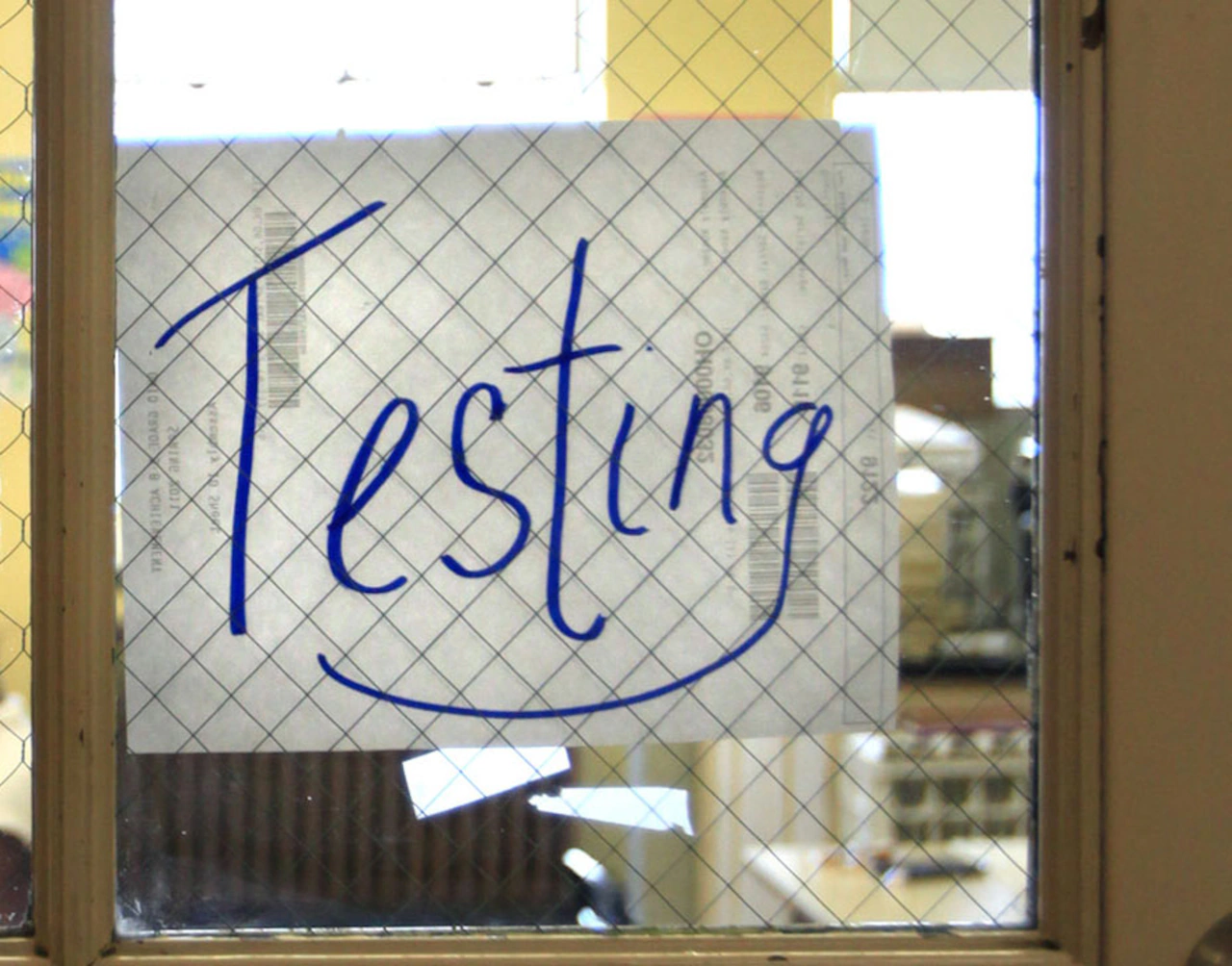
COLUMBUS, Ohio — East Cleveland City School District employed over a dozen strategies to shoot from 2 to 3 stars on the state report card, ranging from tutoring to identifying student interests and linking them to classroom learning.
If a high school student plays football, officials loop in the coach to talk about the importance of grades. Or a favorite teacher is recruited to encourage a student to study more. Students at the three-year-old Superior School for the Performing Arts hone in on their love for dance, music, drama and graphic arts while focusing on English, math, social studies and science.
East Cleveland is among a handful of Northeast Ohio school districts that improved on the report cards released this year compared to last year.
Other districts with year-over-year gains also deployed unique strategies. Implementing the “science of reading” literacy curriculum helped some districts make gains in English language arts, as did focusing on opportunities for gifted students. Most districts said they constantly focused on data and offering targeted assistance in areas students struggled with.
The state released the report card ratings, mostly based on standardized tests students took last spring, last Monday.
East Cleveland elevated from 2 overall stars on last year’s report cards – meaning the district needed support to meet state standards – to 3 stars, which means it has met state standards.
“For the first time we’re meeting state standards, really, ever in the modern era of the school district,” said Henry Pettiegrew II, the district’s superintendent and CEO. “We’re really excited and happy about that. It’s not a finish line. It’s definitely a starting point. And we want to see if we can get more stars.”
Low test results have persisted for at least two decades in East Cleveland. Reform-minded state lawmakers frequently point to the district as the case study of how millions in local and state tax dollars yield minimal results.
‘Monitored by two metrics’
Seven years ago, the state took control of the district, with officials in Columbus appointing members to an academic distress commission to supplant most of the role of the locally elected school board. The commission appointed Pettiegrew as CEO in 2019, although nowadays, he also serves as superintendent, due to the relaxing of the state law governing the districts under state takeovers.
Academic distress commissions never significantly improved school test scores, so in 2021, lawmakers decided to allow districts under state control to design three-year improvement plans – which had to be approved by state education officials – to permanently shed the academic distress commissions.
East Cleveland’s plan contained 20 measures, of which the state expected improvement in 51% of them.
“Those measures coincidentally also helped drive the achievement and the progress that we’ve seen in last year’s report card,” Pettiegrew said. “…East Cleveland has been in a unique situation. We’ve been monitored by two metrics.”
Each quarter, the district shared with teachers and the community student performance on the 20 measures, Pettiegrew said. Over time, performance improved.
The academic distress commission is still involved in East Cleveland, although the district met the requirements to exit on June 30. The Ohio Department of Education and Workforce will decide in December whether the district can return to normal operations, he said.
Pettiegrew said that the school brought in tutors to help students before, after and during the school day. East Cleveland initially used COVID-19 recovery funds to hire tutors. When those ran out, officials built tutoring into the district’s budget, he said.
Lillian Tolbert, president of the East Cleveland Education Association, said that teachers were committed to helping students improve, it just took time to hit a stride. During COVID-19, teachers and students had remote learning and learning losses, as did most the districts in Ohio. Then East Cleveland parents had to get on board with the plan for improvement.
“It was a work in progress,” she said.
The average teacher has been at East Cleveland for 11 years, according to the state report card. Tolbert said she has been in the district for 33 years.
“This hasn’t been something that magically happened overnight,” she said. “I think it’s just continuing to do the work, continuing to put in the effort, continuing to try, to find new and innovative ways to motivate the students, and to get them to build confidence enough to know that they can pass the test.”
2025 School Report Cards
Report cards: Ohio student math scores recovering from COVID-19, reading dips
Ranking all 607 Ohio public school districts by their 2025 report card test scores
Early into ‘science of reading’ transition, how are Ohio schools adapting?
Wealthiest districts score best in 2025 Ohio school report cards; see the trend
See building-by-building 2025 Ohio school report cards
Other Northeast Ohio districts
Other school districts in Northeast Ohio with report card improvement talked about the measures they took.
-Parma City School District, increased to 4 stars, from 3.5
The district made gains in the graduation and achievement components of the report cards. Parma City deployed strategies such as teacher professional development in the “science of reading” instructional approach to literacy, which emphasizes phonics and vocabulary. Teachers focused on checking whether students really understood the material. They monitored progress throughout the year, using data to quickly identify when support was needed, said Carissa Cochrane, Parma’s director of communications and public relations.
“We also placed a strong emphasis on school culture and climate,” she said. “We know students learn best when they feel safe, welcomed, and encouraged, so we used surveys from families, staff, and students to evaluate each building and identify areas for improvement.”
-Willoughby-Eastlake City Schools in Lake County, increased to 3.5 stars from 3
This rise comes from improvements in early literacy and a component of the report card known as gap closing, which evaluates graduation rates, absenteeism, gifted students and performance of math and English for students of different income, racial and ethnic groups.
“The improvement we’ve seen in early literacy is a direct result of our intentional focus on high-quality, science of reading-aligned materials and the belief that every child can learn,” Superintendent Patrick Ward said. “When you combine the right tools with the dedication of our teachers, you see results.”
-Cleveland Heights-University Heights City School District, increased to 3.5 stars from 2.5
The gains are thanks also to an increase in the progress component, which measures growth made by groups of students compared to students like them across the state.
The district also boosted its score in gap closing, notably in an area that measures performance and opportunities for gifted students.
“The Gifted Education team in CH-UH worked incredibly hard last year to ensure students are identified, receive appropriate services, and are successful in the classroom, and that hard work is evident in our scores,” said Superintendent Elizabeth Kirby, in a message to the community.
-Firelands Local School District in South Amherst in Lorain County, increased to 4 stars from 3.5
The district provided dedicated intervention periods to deliver targeted support tailored to students’ individual needs. It aligned curriculum to ensure students built skills in a consistent, connected way from one grade to the next. Teachers received coaching, support and feedback in English and math instruction, the district said in a statement.
“Most importantly, it reflects the determination, expertise, and hard work of our teachers, who go above and beyond every day to ensure students grow and succeed,” the statement said. “This achievement is a true testament to the collaboration between educators, staff and families who remain committed to providing high-quality instruction and opportunities for all students.”
Challenges for East Cleveland
The district’s transiency rate, or the percentage of students who move into or out of the district in a school year, is about 30%.
This makes it hard for the district to build on academic gains, Pettiegrew said.
“You work with them and get progress, then they leave for a number of reasons that aren’t related to the school district,” he said. “Then, almost on a daily basis, we’re getting new students.”
Transiency rates in urban, high-poverty districts tend to be greater than other districts in Ohio and across the U.S. Homelessness and housing instability, changes to family circumstances – death, divorce, moving children into foster homes – and parents’ job opportunities are among the reasons students move in and out of districts.
East Cleveland’s high transiency rate contributed to the district’s 1 star in each the graduation and the early literacy components of the report card, Pettiegrew said.
Incomes in the district are among Ohio’s lowest. East Cleveland’s median gross income, based on 2022 Ohio tax returns, was $25,140. This was the third lowest of the 609 school districts the Ohio Department of Taxation calculated for the year.
Higher family income is associated with increased student achievement.
For comparison, Ohio’s highest median income was in Indian Hills Exempted School District, outside Cincinnati, at $94,710 in 2022.
In the most recent report card, Indian Hills received 5 stars.



